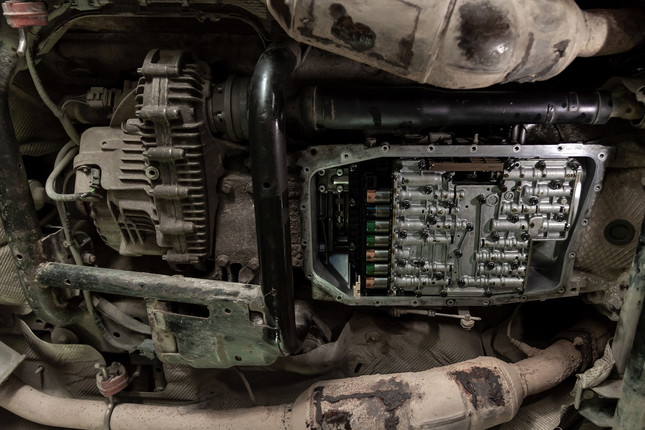Can You Drive with a Bad Transmission Valve Body? What You Need to Know
Driving with a bad transmission valve body can cause serious damage to your vehicle’s transmission, harm your driving experience, or even result in avoidable accidents. Learn about the symptoms of a failing valve body, the risks of driving with this issue, and potential repair or replacement options. Understanding the problem early can save you from costly repairs.
The valve body is the control center where the magic happens; hydraulic fluid is pumped into specially-machined channels to automatically shift up or down, based on your car’s electronic shifting system. Problems with the valve body – from physical integrity to a broken solenoid – can result in harsh shifts, delayed engagement, or even transmission failure.
Poor shifting performance can also make driving unsafe, leading to unpredictable acceleration and potential accidents. Plus, the longer you wait to fix the issue, the higher the repair costs, as other transmission components may also get damaged. Driving with a bad valve body is never a good idea. Professional diagnostics and repair can restore your transmission’s smooth performance, saving you from costly future repairs, or worse.
What Is a Transmission's Valve Body?
The function of the transmission valve body is to act as the mechanical brain of an automatic transmission. It is composed of channels, which direct transmission fluid to specific up- or down-shifts, such as first into second gear, second into third, or third into second. These channels ensure that the fluid flows to the appropriate area for the effective operation of the transmission. Electronic solenoids determine how the fluid is directed through the valve body, as per your car’s electronic shifting system. This uses certain inputs, such as your engine’s rotations-per-minute (RPM), total load, vehicle speed, and throttle position, to determine when to shift up or down.
A transmission consists of gearsets that alter the transfer of torque from the engine to the driveshaft. This is what transfers rotation into your car’s wheels, allowing you to move. A higher gear transfers energy more efficiently, but has poor torque, and would struggle with the inertia needed to get a car moving.
A low gear can overcome the inertia of a stationary vehicle but would push the engine to its limit before your car reaches any sort of speed. Shifting through a set of different gears allows your car to maneuver through a variety of speeds, up hills, and through terrain. The valve body is what makes the automatic transmission possible, taking the clutch and shifter out of the equation.
Signs of a Bad Transmission Valve Body
A bad valve body effectively cripples your transmission, but the process can be slow at first. Identifying the warning signs of a bad transmission valve body can save your transmission, by allowing you to opt for a cheaper repair or rebuild rather than a new transmission. Some of the warning signs of a bad transmission valve body include:
- Rough or jarring shifts between gears, could indicate poor hydraulic pressure regulation.
- A delay when shifting from park into drive, or reverse, is caused by slow fluid distribution.
- Your transmission randomly slips out of gear, and back into neutral, leading to a loss of power or total gear disengagement.
- Your transmission randomly shifts into a higher or lower gear, even when you’re driving at a consistent speed on a straight and level road, often referred to as erratic shifting.
- You hear grinding or clunking sounds whenever your car shifts.
- Your car is stuck in a low gear and the engine won’t go over 3,000 RPM (also called “limp mode”).
- Your car’s check engine light or transmission warning light is on.
Causes of Transmission Valve Body Failure
Transmission valve body failure can result from normal wear and tear, lack of maintenance, or contamination of transmission fluid. These are all ultimately connected. While wear and tear is always a concern, it’s accentuated by contaminated transmission fluid, which usually occurs due to a lack of regular maintenance. Older vehicles, which rely on purely mechanical valve bodies without electronic controls, are particularly susceptible to these issues.
Degraded transmission fluid can damage or impact the performance of your transmission, lead to blockages, or cause damage to the valve body and surrounding solenoids. Poor fluid quality can result in overheating, which damages or warps the transmission. Solenoid failure can also cause fluid pressure malfunction.
Finally, early automatic transmissions were plagued by design flaws and inefficiencies. Consider getting your car’s transmission rebuilt rather than just buying a used replacement transmission, especially if your car is a vintage vehicle. Modern transmissions, with their advanced electronic controls and multiple gears, offer improved performance and fuel efficiency, but they also come with their own set of complexities.
Can You Drive with a Bad Transmission Valve Body?
While your car is still going to work, driving with a faulty transmission valve body can be risky and may lead to complete transmission failure over time.
Short distances might be fine, but you’ll immediately notice a poorer driving experience due to gear slippage or unresponsive shifting. Over long periods, ignoring a bad valve body can become much more costly than addressing the issue early on.
Repair or Replacement: What’s the Best Option?
In some cases, a damaged valve body can be repaired, while in others, it may require a full replacement. Not all valve body issues are ultimately the same. Remanufactured valve bodies are an excellent option, as they meet or exceed original equipment (OE) specifications. It’s a lot easier to replace a single solenoid than an entire transmission. Sometimes, it’s also worth getting a second or third opinion.
A good mechanic will not only rely on the error code your car’s computer is giving but will inspect the valve body itself for mechanical damage or signs of significant wear and tear. If it’s just a matter of properly flushing out your transmission fluid, replacing a solenoid, and putting her back together, then you’re looking at a simple repair process.
A damaged valve body, however, will require rebuilding or replacing key parts of the transmission. Costs for a total rebuild can be upwards of $2000 depending on the transmission, while a simpler repair might only cost you $250-$500. A total transmission replacement will always cost more than replacing and reinstalling a single-valve body, even in pricier cars – so don’t hesitate to address the issue as soon as you can.
Preventing Valve Body Issues: Maintenance Tips
Your transmission doesn’t require regular fluid checks or hefty maintenance. Just keep an eye on your car’s shifting behavior, gear changes, and certain sounds or changes in driving behavior. The torque converter clutch plays a crucial role in transmission performance, and issues with it can lead to symptoms like shuddering and stalling. Consider getting your car’s transmission inspected at least once every 30,000 miles or so, or once every few years.
Any accidents or damage to the frame of the car should be followed up with a thorough inspection of every part of your car, including your transmission. Major physical damage to the outside of the vehicle can cause damage to the transmission, from a fluid leak to warped parts.
Conclusion
Driving with a bad transmission valve body can lead to serious and expensive damage. Addressing the problem as soon as symptoms arise is crucial to maintaining the safety and performance of your vehicle, while also avoiding much, much more painful and costly repairs soon.




